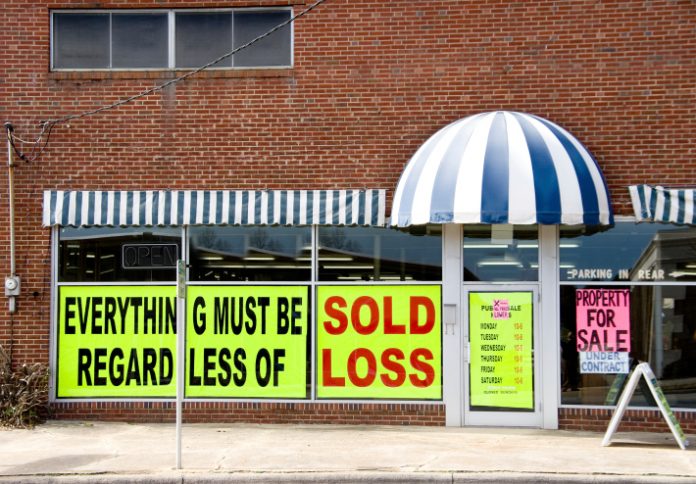Residents of a quiet, rural North Carolina community are about to be yanked into the zero-emissions automotive future.
Saying they are on a “tight schedule,” North Carolina officials have announced they will use eminent domain to buy and destroy 27 homes, five businesses, and will move a Baptist church to clear a path for Vietnamese EV startup manufacturer,VinFast, to build an automotive assembly and battery manufacturing plant in Chatham County.
Green Raw Deal
Residents of Moncure and Merry Oaks find themselves in the crosshairs of the North Carolina Department of Transportation (NCDOT). In mid-August, NCDOT produced large maps showing the network of roads and highway interchanges that will have to undergo changes to improve access to the 2,150-acre Triangle Innovation mega-site where the EV plant will be located. Homes and businesses in the new right-of-way will have to go.
Lena Stone stands to lose four homes – hers and four rental properties – didn’t learn of the pending eminent domain action until mid-August, even though NCDOT wants to begin buying up properties this month.
“I was in shock. I cried all weekend,” she told Newsobserver.com (August 23). “It’s going to change the whole community.” Residents were confronted with a fail accompli; their input was neither requested nor desired.
VinFast wants to begin producing EVs in the Tarheel State in 2024, so the work NCDOT must do to in preparation will be speeded up. Chatham County and the state are also eager to get the project off the ground after offering $1.25 billion in tax incentives and other goodies to lure the company to central North Carolina. Included in the $1.250 billion package are $250 million in road and rail improvement near the site. To partake of the various financial incentives the state and county are offering, VinFast will have to meet several job goals. All told, the project is said to provide for as many as 7,500 new jobs.
Putting Profits Above Property Rights
Gov. Roy Cooper (D) is the project’s biggest supporter and was instrumental in bringing VinFast to North Carolina.
“North Carolina is quickly becoming the center of our country’s emerging clean-energy economy,” Cooper said in a statement. “VinFast’s transformative project will bring many good jobs to our state, along with a healthier environment as more electric vehicles take to the road to help us reduce greenhouse gas emissions.”
Build it and They Will Come. Or Will They?
Gov. Cooper’s optimism is shared by the Biden administration, many automakers, Wall Street investors, and others who see a green wave headed our way. The transition from the horse to the horseless carriage, which was underway at the turn of the 20th century, was organic. Thanks to human ingenuity, something better than the horse came along, and people gradually adapted to the new form of transportation. Fuel for the vehicles was supplied by the private sector, with government providing the roads, bridges, and other infrastructure.
Government Mandates Not Market Demand
By contrast, today’s transition is being driven by government in the form of mandates, regulations, and subsidies to the politically favored. Gasoline-powered vehicles are being phased out, not by popular demand, but by a combination of government edicts and automaker complicity so as not to jeopardize receiving handouts from Washington. The EV infrastructure is, at best, in its infancy and may never reach adolescence, much less adulthood. The electricity needed to power the millions of EVs said to be on the road in a few years won’t be coming from windmills or solar panels. And the planned elimination of fossil fuels by the ruling class, along with its hostility to nuclear power, means there’s nothing on the horizon to fill the gap.
Today’s electric grid is in no condition to provide power to EVs, particularly as it becomes more reliant on intermittent renewable energy. In the midst of a hot spell, evergreen California is telling EV drivers to forego charging their vehicles during certain times of the day. That’s a preview of coming attractions, and not just in California. Wherever the electricity comes from, to reach the millions of yet-to-be-installed charging stations around the country, it will have to be sent over high-voltage transmission lines that will crisscross the country for thousands of miles, including down neighborhood streets, playgrounds, and backyards. And how about the batteries that go into the EVs? The raw materials they require must first be mined. China has a virtual monopoly on lithium and cobalt, and Russia controls one-fifth of the world’s high-grade nickel. Yes, some of this could be mined in the US, but green activists will never let it happen.
And we haven’t even addressed the problem of EV fires, or what is to be done with the millions of EV batteries once they die. Along with this comes all the other dead batteries that must be removed from solar arrays and wind farms, where they provided backup for unreliable wind and solar power.
It won’t be a happy transition, no matter what, Gov. Cooper says.
Bonner R. Cohen, Ph.D., (bonnercohen@comcast.net) is a senior policy analyst with CFACT, where he focuses on natural resources, energy, property rights, and geopolitical developments.
This article was originally published by CFACT and is republished with permission.
For more on electric vehicles, click here.
For more on governments use of eminent domain for economic development, click here.
For more on North Carolina policy issues, click here.


























